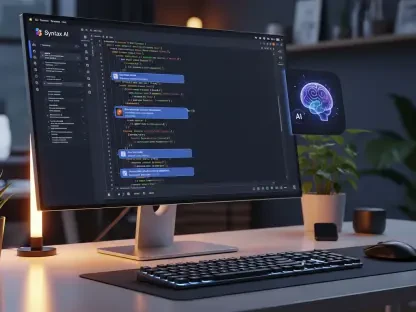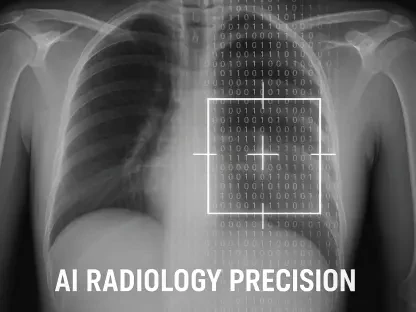What if a single tool could transform the painstaking process of video editing into a seamless, real-time experience, allowing creators to pluck objects from one scene and place them into another with just a click? Imagine a filmmaker extracting a soaring bird, complete with its shadow, from a cloudy sky and dropping it into a sunset vista—all in under a second per frame. This isn’t a distant dream but a reality brought to life by a groundbreaking innovation from researchers in Israel. Unveiled at the SIGGRAPH Asia conference this year, this technology is already sending ripples through the creative industry, promising to redefine how video content is crafted.
Why Speed Is the New Currency in Video Creation
In today’s fast-paced digital landscape, video content reigns supreme across platforms like social media, streaming services, and advertising. The pressure to deliver polished, engaging visuals often collides with tight deadlines, leaving editors scrambling for efficient solutions. Traditional methods of separating foreground elements from backgrounds have been a notorious time-sink, often requiring hours of manual work or powerful systems to process mere seconds of footage. This bottleneck has long hindered both professionals and amateurs seeking quick turnarounds.
The urgency for rapid editing tools has never been greater, as businesses report a 75% increase in viewer engagement when videos are tailored with dynamic effects, according to recent industry studies. A solution that slashes processing time without sacrificing quality could unlock unprecedented creative potential. This is where a new player in the field emerges as a potential game-changer, addressing these very challenges with cutting-edge precision.
Unveiling the Power of a Training-Free Marvel
At the heart of this revolution lies a tool developed by researchers from Bar-Ilan University, in collaboration with experts from the Hebrew University and OriginAI Research Center in Israel. Named for its all-encompassing approach to video matting, this innovation operates without the need for extensive training data—a stark departure from conventional AI models that demand millions of labeled examples. Instead, it cleverly repurposes pre-trained video diffusion models like WAN or VEO3, adapting image-completion techniques to handle dynamic footage with ease.
What sets this technology apart is its ability to process frames at an astonishing speed of 0.04 seconds on an A100 GPU. This means editors can see results almost instantly, a feat that older systems, taking minutes per frame, could never achieve. Beyond speed, the tool ensures consistency across frames, preserving intricate details like hair strands, water ripples, and reflections through a self-attention mechanism that tracks spatial and temporal changes.
How It Redefines Creative Boundaries
The practical implications of this breakthrough are nothing short of transformative. Consider a scenario where an advertiser extracts a swan gliding across a lake, reflection and all, and places it into a completely different setting for a campaign—all while recycling the original lake background for another project. Such flexibility, demonstrated by the research team, showcases a “visual compositing system” that empowers creators to repurpose content effortlessly.
This isn’t just about aesthetics; it’s about workflow efficiency. Real-time processing allows for on-the-fly adjustments during live productions or under tight schedules, a boon for industries where every second counts. For filmmakers and content creators, the ability to manipulate video layers without hefty computational costs opens doors to experimentation that was previously out of reach due to resource constraints.
Expert Voices Weigh In on the Innovation
The credibility of this tool is reinforced by the expertise behind it, including Dr. Dvir Samuel and Prof. Gal Chechik, a senior figure at NVIDIA. Their detailed research paper, accessible on arXiv, outlines the methodology that has captivated peers at SIGGRAPH Asia. Dr. Samuel emphasized the tool’s potential to evolve, noting, “The next step is sound synchronization—ensuring audio matches visual edits, like muting a barking dog when it’s removed from a scene.”
Industry professionals are already taking notice. Feedback from early adopters in video production highlights how such advancements could streamline scene reimagining for commercials and films. This blend of academic rigor and real-world applicability suggests that the technology could set a new standard, influencing not just editing software but also how creative projects are conceptualized from the ground up.
Practical Steps for Creators to Harness This Tool
For those eager to integrate this innovation into their workflow, several actionable approaches stand out. Start by using the tool to isolate moving elements—such as a person jogging or a car speeding by—and blend them into new environments for storytelling purposes. Clear, high-quality video clips yield the best results, so prioritize source material with minimal noise or clutter.
Another avenue is background recycling, where original settings can be repurposed for different narratives while maintaining a natural look through the tool’s frame-by-frame tracking. Additionally, embedding this technology into existing editing pipelines can optimize real-time revisions, especially for live events, provided compatible hardware like an A100 GPU is accessible. For casual users, anticipation builds for user-friendly versions, with practicing on short smartphone clips serving as preparation for future updates.
Reflecting on a Milestone in Video Innovation
Looking back, the introduction of this remarkable tool marked a turning point for video editing, breaking down barriers of time and technical complexity that once confined creators. The collaboration between Israeli research institutions delivered a solution that not only met the demands of a visually driven era but also set a precedent for efficiency in AI applications. Its impact resonated across professional studios and hinted at accessibility for everyday enthusiasts.
As the technology matured, the focus shifted toward refining audio-visual coherence and expanding its reach. Creators were encouraged to explore its capabilities, test its limits with diverse projects, and stay attuned to upcoming enhancements that promised even broader applications. This journey of innovation underscored a vital truth: the future of content creation lay in tools that empowered speed and imagination in equal measure.









